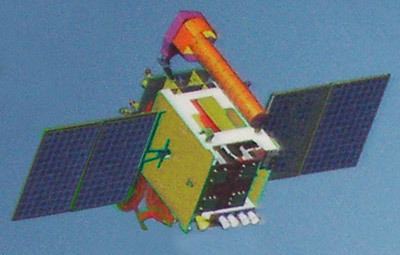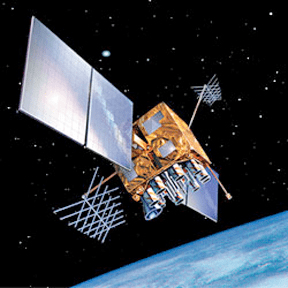COSPAR ID 2013-044B Mission duration 7 years planned Launch date 30 August 2013 Inclination 0.06° Launch site Guiana Space Centre | Operator ISRO SATCAT no. 39234 Inclination 0.06° Period 24 hours Rocket Ariane 5 | |
Similar INSAT‑3D, GSAT‑8, INSAT‑4E, INSAT‑3C, GSAT‑14 | ||
GSAT-7 or INSAT-4F is a multi-band military communications satellite developed by ISRO. The Indian Navy is the user of the multi-band communication spacecraft, which has been operational since September 2013. According to defense experts, the satellite will enable the navy to extend its blue water capabilities and stop relying on foreign satellites like Inmarsat, which provide communication services to its ships.
Contents
Satellite

GSAT-7, the multi-band communication satellite named Rukmini carries the payloads in UHF, C band and Ku band. It is the first dedicated military communication satellite built by ISRO that will provide services to the Indian defence forces with the main user being the Indian Navy. The 2,650 kilograms (5,840 lb) GSAT-7 is the last of ISRO’s seven fourth-generation satellites. Its foreign launch cost has been put at Rs. 480 crore, with the satellite costing Rs. 185 crore. The multiple-band spacecraft will be used exclusively by the Navy to shore up secure, real-time communications among its warships, submarines, aircraft and land systems. GSAT-7/ INSAT-4F is said to significantly improve the country’s maritime security and intelligence gathering in a wide swathe on the eastern and western flanks of the Indian Ocean region, among others. ISRO is expected to launch the second satellite, GSAT-7A, in 2014-15 Which will be used by the Indian air force . The state-of-the-art satellite carrying payloads operating in UHF, S, C and Ku bands, had a lift-off mass of 2,625 kilograms (5,787 lb) and is based on ISRO's 2,500 kilograms (5,500 lb) satellite bus with some new technological elements, including the antennae. After a flight of almost 34 minutes, the satellite was injected into a geosynchronous transfer orbit (GTO) of 249-kilometre (155 mi) perigee, 35,929-kilometre (22,325 mi) apogee and an inclination of 3.5 degree with respect to the equator.
Launch
The satellite was launched early on 30 August 2013 atop an Ariane 5 ECA rocket from Kourou, French Guiana.

India's first dedicated military satellite was put into a geosynchronous orbit, about 36,000 kilometres (22,000 mi) above Earth, five days after it was launched after three orbit-raising manoeuvres from ISRO's Master Control Facility at Hassan in Karnataka. The 2.5-tonne spacecraft's antennae, including the ultra high frequency Helix antenna were deployed before it was stabilised on its three-axis in the orbit. All of the on-board transponders were switched on successfully on September 18, 2013
Capability

Rukmini will provide networking capabilities to various Indian Naval assets. During Theater-level Readiness and Operational Exercise (Tropex) in the Bay of Bengal in 2014, Rukmini was able to network about 60 ships and 75 aircraft seamlessly. The intention of the Indian Navy is to use this geostationary naval communication and surveillance satellite to especially cover activities up to the Malacca Straits in the east and the Hormuz Strait to the west. Rukmini has a nearly 2,000 nautical mile 'footprint' over the Indian Ocean Region.

